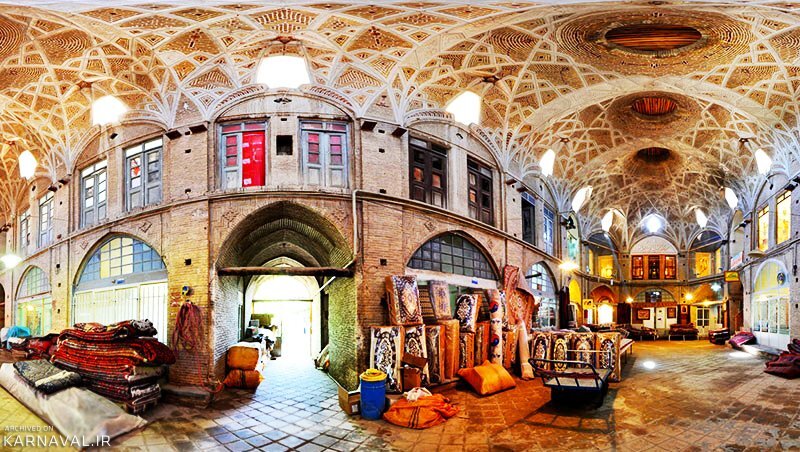Centuries-old Bazaar of Arak undergoes restoration

TEHRAN—Restoration work has commenced on the centuries-old Bazaar of Arak, which is a top destination for travelers to the central Iranian city.
Teams of restorers and cultural heritage experts are currently busy amending six traditional marketplaces, each dedicated to a particular trade, within the Bazaar of Arak, Markazi province’s tourism chief said on Thursday.
At the same time, emergency repairs are being conducted in other sections of the vaulted bazaar including its main accesses, Mostafa Marzban said.
“Moreover, a series of basic repairs aimed to remove possible [safety] risks are on the agenda.”
“Moreover, flooring and landscaping of passageways are being implemented with the participation of the Baft Municipality,” the official said.
The 19th-century bazaar embraces caravanserais, Timches (small arcaded courtyards each dedicated to a single type of business), and hundreds of shops in an area of 14 acres.
Bazaar is, originally, a public market district of a Persian town. The bazaar of the ancient Islamic world was vividly described in the folktales of “The Thousand and One Nights.” Located in a distinct quarter of a town, it was bustling and noisy by day in contrast to the quiet residential quarters. Access was forbidden after sundown.
Distinctive architecture characterized some bazaars—such as those built at Kashan and Isfahan in Iran in the 17th century. They were usually roofed for protection against the hot desert sun, either with a single roof, with individual vaulted cupolas or domes, or with awnings.
In Iranian culture, bazaars have been traditional public spaces in Iranian cities with great contributions to commercial activities in urban life meanwhile their extended activities can be traced to social, cultural, political, and religious roles.
Most mazes and passages offer certain commodities such as carpets, metalwork, toys, clothing, jewelry, kitchen appliances, traditional spices, herbal remedies, and natural perfumes. One can also bump into colorful grocery stores, bookbinders, blacksmiths, tinsmiths, coppersmiths, tobacconists, tailors, flag sellers, broadcloth sellers, carpenters, shoemakers, and knife-makers.
Several divided carpet sections across the bazaar enable visitors to watch or buy hand-woven Persian carpets and rugs with different knot densities and other features. From another point of view, bazaars are also synonyms for foods, with their unmissable colorful stalls of vegetables, herbs, and spices. Yet, most of these ingredients might be mysterious to a foreign eye.
Browsing through a traditional bazaar may provide new experiences and fresh points of view on the ancient land. Such excursions can be made either in person or by “off-the-beaten-track” tours. Not only it’s an opportunity to discover dozens of unique local ingredients, but it’s also a chance to taste street foods and delicacies, in some traditional bakery known only by locals and shopkeepers.
People watching and even mingling with them in the bazaars is one of the best ways to take the pulse of the country. Bazaars have traditionally been major economic and social centers in any Iranian city.
AFM
Leave a Comment